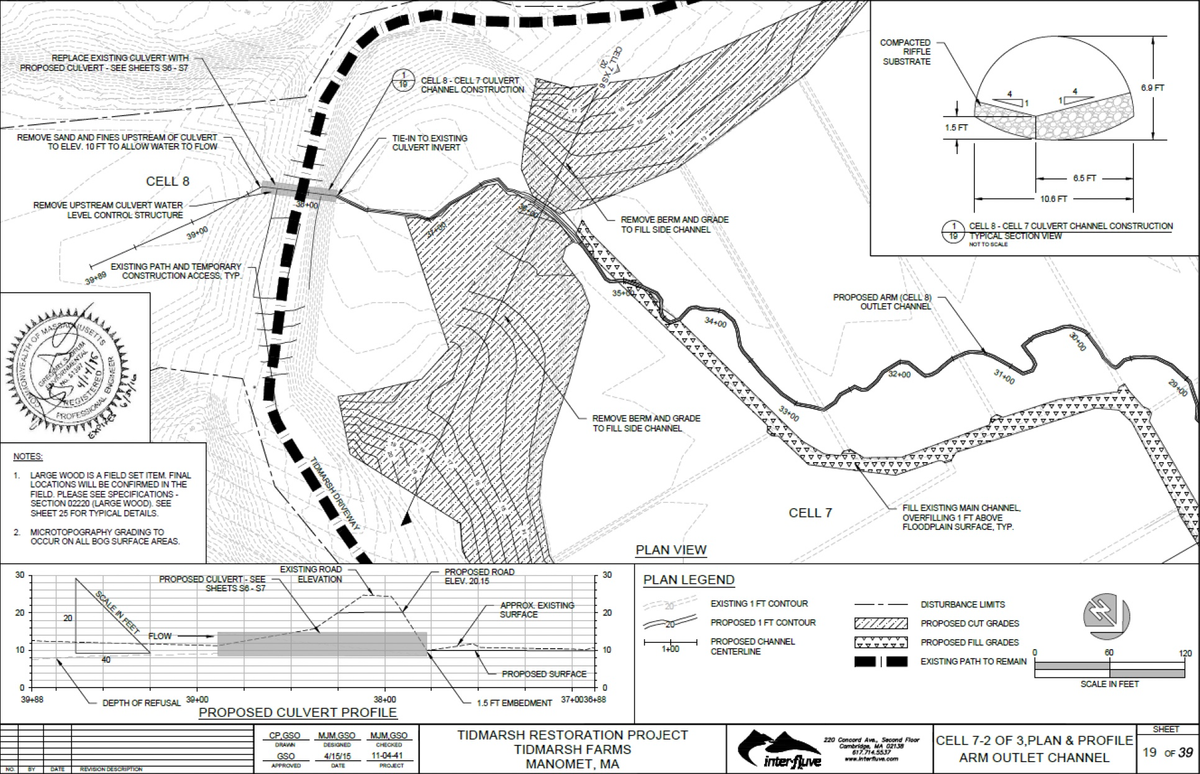Making Meaning at Tidmarsh
Notes and Observations - Stop 5
Seven years post restoration, 51 people from 21 organizations assembled at Mass Audubon's Tidmarsh Wildlife Sanctuary to walk, explore, and learn how this wetland restoration has responded to the restoration intervention. The goal of the day was to learn together about the process of recovery at Tidmarsh, and collect insights that can be applied to other wetland restorations of cranberry farmland.
- Remove earthen berm
- Remove water control structure
- Construct new tributary channel
- Smooth upland-wetland transitions
- Roughen bog surface
- For Ballantine Square - Remove sand to apparent groundwater table; unique surface treatment treatment for research. (prepared as a dance floor)
Ballantine Square
5 treatments, 5 replicates, 2 x 2 m plots: amendments added to soil.
Track physical and chemical, N cycle, and microbial diversity
- Would like to know how much carbon is released during active restoration.
- Lots of diversity
- Self-roughening caused by plants colonizing.
- This is a story of uniformity and a monocuture transforming into micro habitats.
- Is it possible to just role up cranberry mat?
- Riffles needed to slow down/hold back water.
- Microtopography provides "room to be wrong"; otherwise elevation needs to be spot on.
- Microtopography allows micro habitats to form; supports diversity.
- Marsh st john's wort, decodon, 3 square bull rush, marsh fern, wollgrass, swamp candles, canada rush, Dulichium arundinaceum (three-way sedge) .
- Patch of phragmites at edge of Ballantine Square.
- Surface water higher than expected in marsh either side of culvert.
- Cranberry bog restorations are experiments waiting to happen.
- Designating some experimental areas will allow us to learn.
- Do more experiments with surface roughening.
Photo credits: Hatch
By
Glorianna Davenport
October 19, 2023
October 19, 2023



